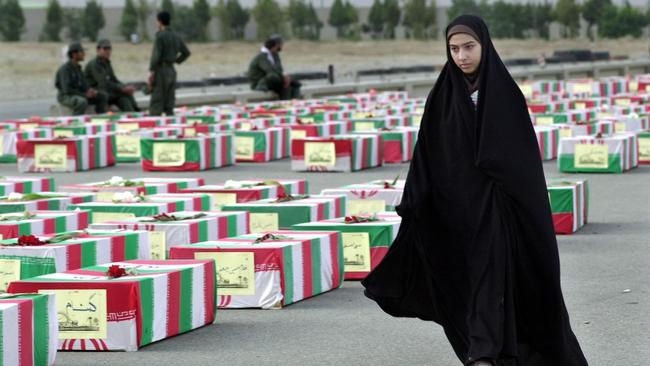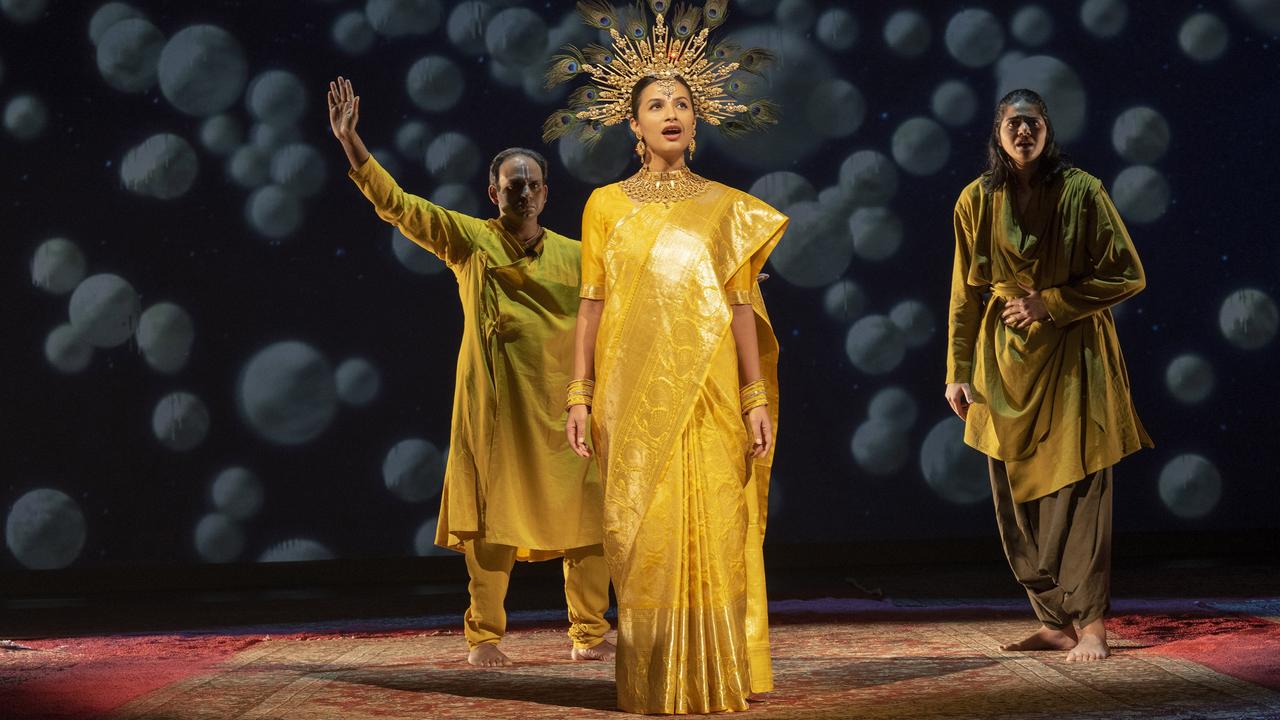Iran-Iraq war history takes in the depth of carnage in the Gulf
There is no higher praise for a war historian than calling their work Thucydidean. Pierre Razoux deserves such praise.

There is no higher praise for a war historian than calling their work Thucydidean. Pierre Razoux’s history of the Iran-Iraq War (1980-88) deserves such praise. It has three Thucydidean characteristics: it is remarkably dispassionate about the protagonists in the conflict; the author is meticulous in describing military operations year after year; and he situates the war in a larger geopolitical and historical perspective.
The conflict — the 20th century’s longest conventional war — is depicted as having not only immediate causes, but roots in several centuries of territorial disputes. Moreover, its implications for both Middle Eastern security and global power rivalries are put into judicious perspective.
The book includes 30 detailed military maps, making it comparable to The Landmark Thucydides edited by Robert B. Strassler and published in 1996, which throws considerable light on the dense text by inserting many detailed maps of the theatres of operation. Razoux and his editors have done us all a great service by also including so many maps. They enable the reader to follow closely what would otherwise quite often be a bewildering description of terrain and military manoeuvres.
The cost of this conflict was enormous, not least because nothing was gained by either side. The total financial cost to Iraq is estimated at $US452 billion; that to Iran $US645bn. The opportunity costs of such immense expenditure, of course, were incalculable. The war deaths totalled about 180,000 in Iraq (including 50,000 Iraqi Kurds) and a stunning 500,000 Iranians. But there were also the wounded and maimed: about 520,000 in Iraq and 1,300,000 in Iran. There were relatively few civilian deaths: about 5000 in Iraq and 10,000 in Iran. Moreover, Razoux makes clear that both states were exhausted by the end of the war’s second year, but Iran refused every overture for a settlement until, by July 1988 it was on its knees.
From the outset, Razoux exhibits a masterly savoir faire in assessing the interests and the actions of the protagonists, from major states to Gulf emirates, and from international statesmen to military officers in Iraq, or clerics and politicians in Iran. He never condescends or engages in gratuitous moralising.
On several occasions he addresses charges regarding American actions or motives, and shows the charges to be unwarranted. Yet, where error or incompetence occurred, he forensically exposes it. This is notably the case with the destruction of Iran Air Flight 655 in July 1988. He describes the event in minute detail, demonstrating that the fault lay neither with Washington nor the Iranians, but with the arrogance and haste of Captain William Rogers, commander of the USS Vincennes.
Occasionally, Razoux’s French background leaps out at the reader. He likens Saddam Hussein’s invasion of revolutionary Iran in September 1980 to the Prussian invasion of France in September 1792, the unexpected French victory at the Battle of Valmy and the quickening of the radical revolution that followed. In their political styles and roles, he likens Iran’s Supreme Leader Ali Khamenei to Maximilien Robespierre, who was heavily involved in the French Revolution and Reign of Terror; and former Iranian president Akbar Hashemi Rafsanjani to French revolutionary leader Georges Danton. Unlike Danton, of course, Rafsanjani was not guillotined by the Iranian Robespierre; but the psychological parallels are apt enough in other respects (though only a French historian is likely to have thought of them).
Saddam, having opportunistically and recklessly started the war and having tried for years from 1982 to end it, actually won in the end. It was a Pyrrhic victory, to be sure; but there is no doubt that Iraq fought the war both resourcefully and successfully. In the final months, an Iraqi army that was four times as large as it had been at the beginning of the war, better armed and battle-hardened, routed the demoralised Iranian forces and forced Tehran to yield. Not the least impressive aspect of Razoux’s history is his mastery of each stage of the war and his understanding of the tactical and strategic thinking that shaped decisions on both sides.
Saddam’s thumping victories in the final months of the conflict retrieved a parlous situation for him and enabled him to posture as a great Arab hero. But they left him with a dilemma. His huge army was very expensive, but demobilising it in a bankrupt country looked likely to cause serious social unrest. In an attempt to solve both problems, he invaded Kuwait only two years after settling the war with Iran. In doing so, he took on a power considerably larger than Iran, apparently without appreciating what he was getting himself into. He blustered about giving the coalition forces “the mother of all battles”, but his troops were simply brushed aside by the US forces.
For eight years Iran had hammered away at Iraq, with prodigal expenditure of its soldiers’ lives and limbs, without either being able to gain much advantage. It had repeatedly attempted to break through Iraq’s defences and open a road to Baghdad, without anything close to success. Then the American superpower, fresh from its geopolitical triumph in the Cold War, marching under a clear UN mandate, stepped in and swept Saddam’s forces off the table as if they were children’s toys. It was a breathtaking display of military power.
Iraq has all but ceased to exist, of course, as a consequence of George W. Bush’s war. Iran has gained from that war everything it was unable to gain during the 1980s war with Saddam, whom it sought in vain to overthrow.
The book includes an extensive set of appendices. In the first of these, Razoux sets out a historical chronology that, rather remarkably, begins with the Arab defeat of the Persians at al-Qadisiyya in AD 636 and concludes in February 1991, when the UN ceasefire monitoring force left the Persian Gulf after the end of the first Gulf war. The second is a tabulated comparison of Iraq and Iran in 1980, covering size, population, geography, ethnic composition, religion, politics, currency and military personnel. The third, a kind of dramatis personae, lists the military high command figures in each state. The fourth, running to 27 pages, details the military forces and capabilities on each side at the outbreak of hostilities.
The fifth appendix describes how armed militias faced each of the antagonists in the 80s, among them five separate Kurdish organisations. The sixth specifies the military assistance provided to the antagonists by other countries. We learn that Iraq, which started the war, received incomparably more help than Iran, starting with assistance worth $US30bn-$US45bn from the Soviet Union and $US17bn from France. No country provided more than $US3bn worth of military assistance to Iran, though China and North Korea reached that amount.
Spread over seven pages, the seventh appendix covers the oil production and exports of the two countries throughout the war, the revenues earned, and the damage done to oil tankers in the course of the conflict. The eighth sets out the naval deployments to the Persian Gulf by foreign powers during the conflict. The ninth and 10th appendices record the war costs in terms of human casualties and financial losses, including types of aircraft and the means of their destruction, as well as a list of air force “aces” on either side.
Concerning Iran, Razoux draws a number of lessons. First, that “the Iranian leadership is perfectly rational and pragmatic and thoroughly understands the notions of ratio of power and deterrence”. Second, that “any military intervention against Iran would only reinforce the regime by uniting the population behind it, rather than weakening it.” Third, that “the Iranian government practises asymmetric warfare and does not hesitate to strike first to take its opponent by surprise”. Fourth, that the Iranian political class sees nuclear weapons as a necessary strategic acquisition. Each point deserves careful consideration in the context of disquiet over Iran’s nuclear program.
Razoux also concludes, however, that most Iranian citizens “appear to be awaiting a strong, pragmatic and coherent government that would protect the country from outside interference, send the clergy back to the mosques … and reopen Iran to the outside world to allow for the economic development of a country that has been living in near autarky for [30] years.”
To the extent they are the realities, we should seek to encourage those developments. Whether the present situation in the Middle East lends itself to the emergence of such a new regime in Iran any time soon is moot. But our goal, at least, should be to do whatever we can to reassure ordinary Iranians and the Iranian political class that this outcome would certainly suit us all better than hostilities.
Paul Monk is a former intelligence officer and author. His latest books are Opinions and Reflections, and Credo and Twelve Poems.
The Iran-Iraq War
By Pierre Razoux
Translated by Nicholas Elliott
The Belknap Press, 640pp, $57.50



